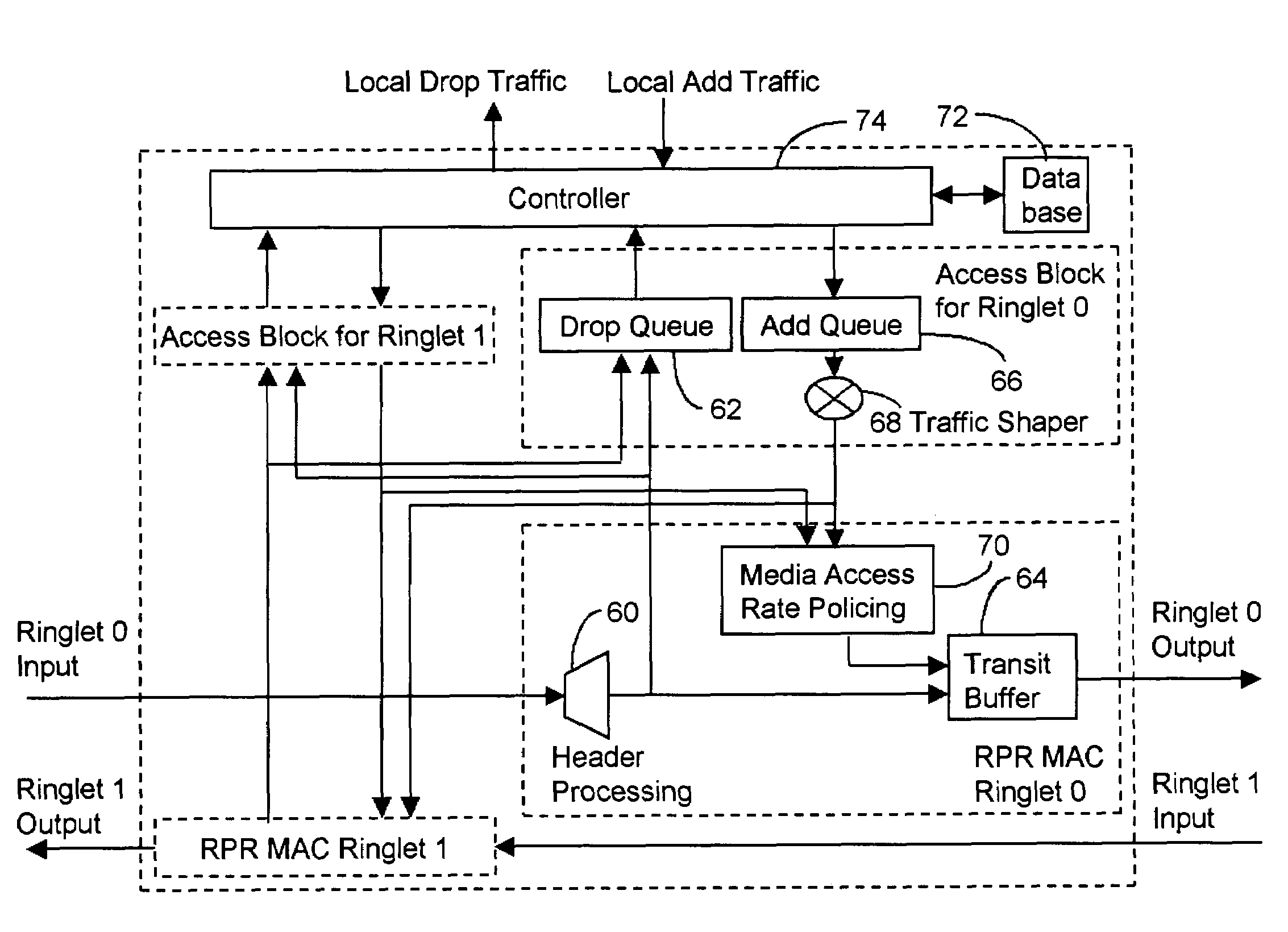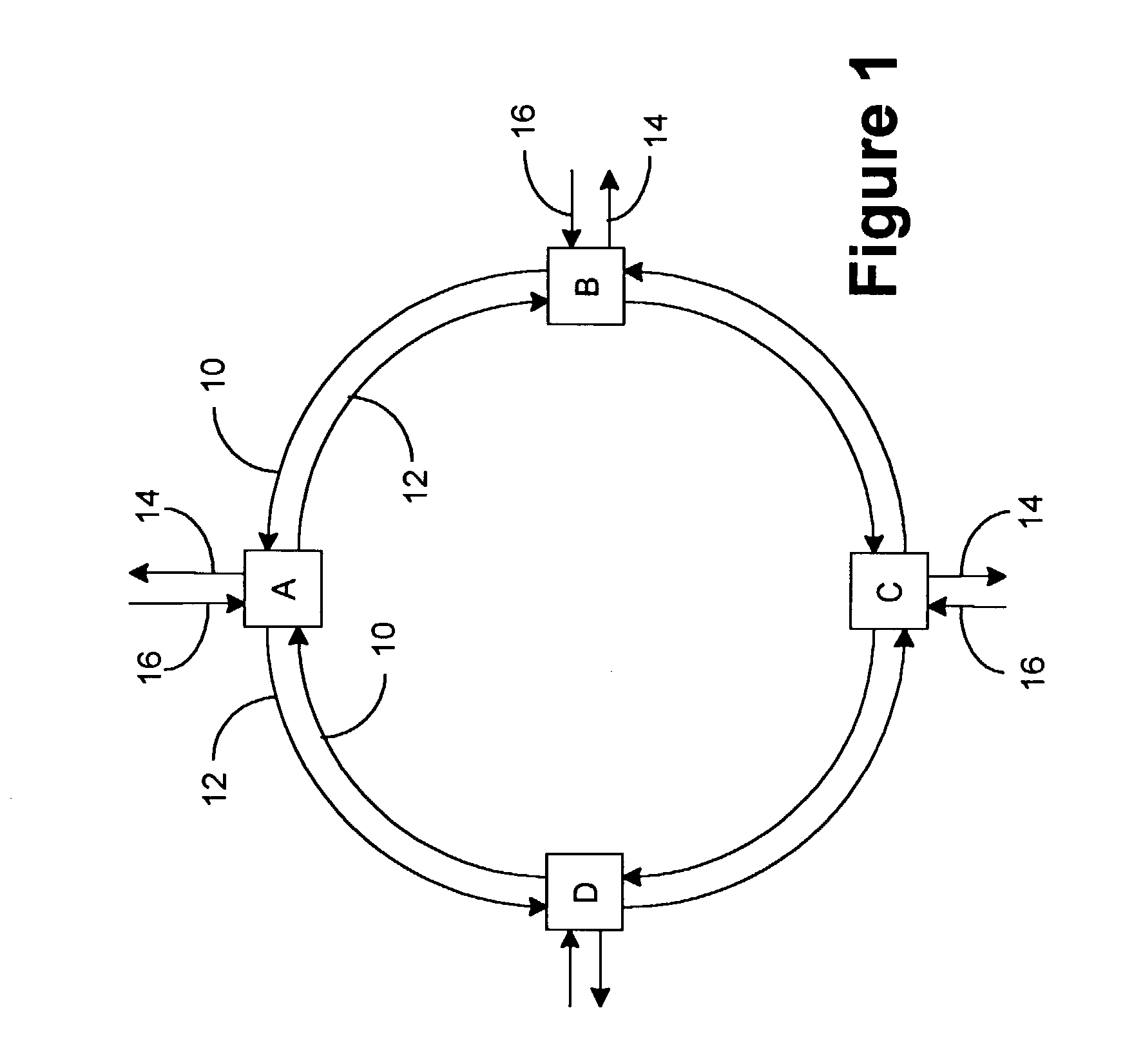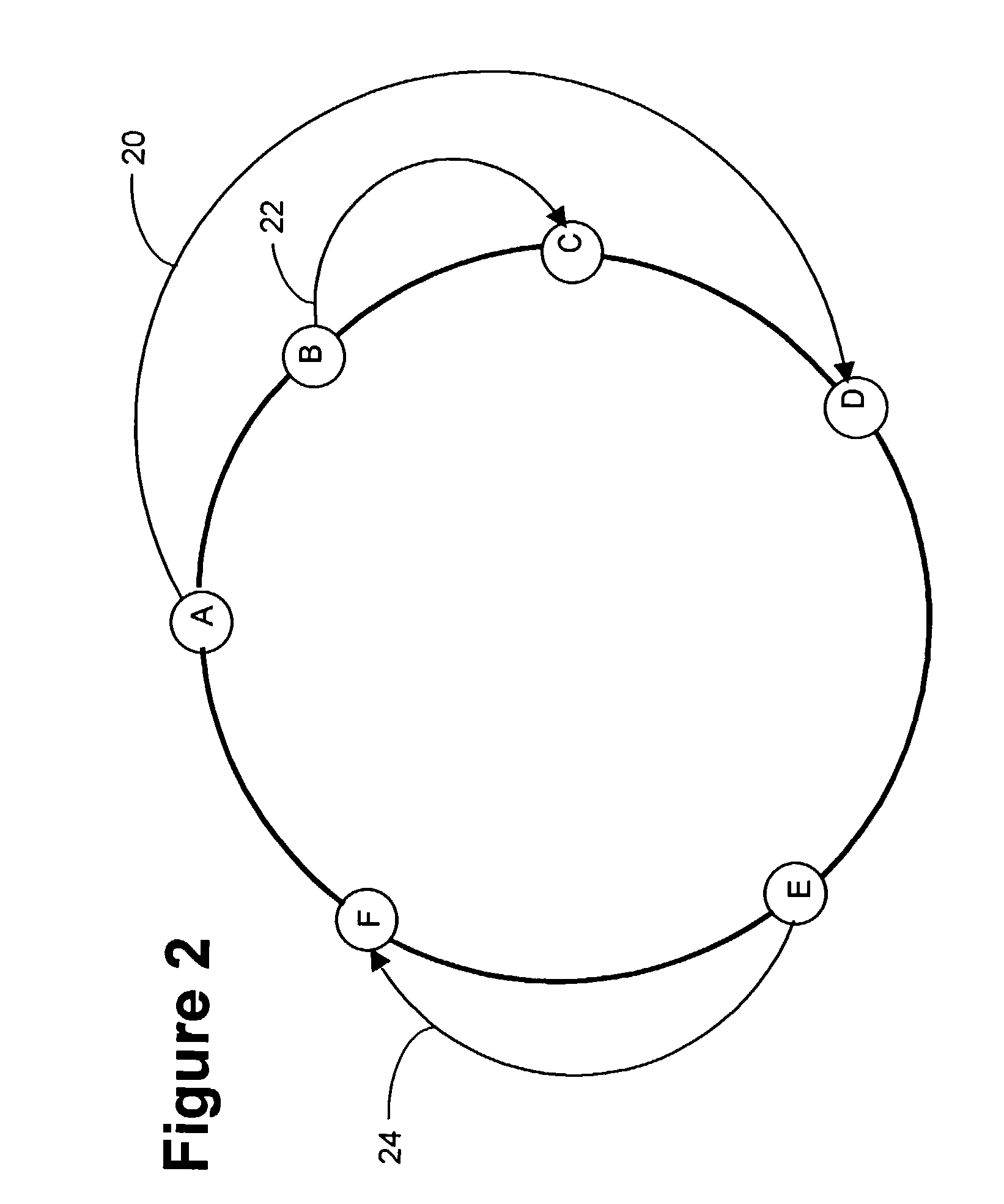Bandwidth management of resilient packet ring network
a resilient packet ring network and bandwidth management technology, applied in the field of bandwidth management of telecommunications networks, can solve problems such as unnecessarily blocking packet ring entry into the network, inadequate conexant solution, and insufficient network utilization
- Summary
- Abstract
- Description
- Claims
- Application Information
AI Technical Summary
Benefits of technology
Problems solved by technology
Method used
Image
Examples
Embodiment Construction
[0039]FIG. 6 shows schematically one of the nodes in a little more detailed fashion according to one embodiment of the invention. As seen in the figure, the structure of an individual node can be thought of as dual add-drop mux (ADM), one for ringlet 0 (east or clockwise direction) and another for ringlet 1 (west or counter-clockwise direction). In FIG. 6, each ADM is made up of a RPR MAC block and an access block for each ringlet. Traffic is received at ringlet 0 input and after header processing 60 the traffic is sent to either drop queue 62 or transit queue (buffer) 64. Traffic to be added at the node is stored at add queue 66. It should be noted that these add and drop queues are each a plurality of queues for one or more channels (flows). These queues can also be virtual queues for all the active channels. Traffic is shaped at a shaper 68 or a media access rate policing 70 to ensure that each channel being inserted obeys rules and rate imposed on it before it is queued in trans...
PUM
 Login to View More
Login to View More Abstract
Description
Claims
Application Information
 Login to View More
Login to View More - R&D
- Intellectual Property
- Life Sciences
- Materials
- Tech Scout
- Unparalleled Data Quality
- Higher Quality Content
- 60% Fewer Hallucinations
Browse by: Latest US Patents, China's latest patents, Technical Efficacy Thesaurus, Application Domain, Technology Topic, Popular Technical Reports.
© 2025 PatSnap. All rights reserved.Legal|Privacy policy|Modern Slavery Act Transparency Statement|Sitemap|About US| Contact US: help@patsnap.com



